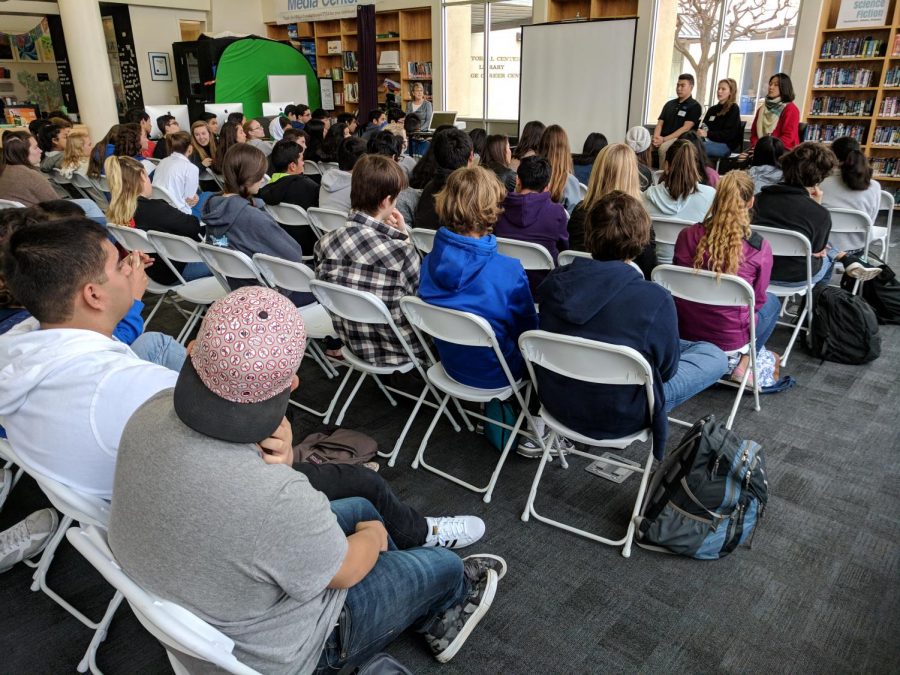Learning from Intersession: Tailoring Sessions to Students
February 13, 2018
Los Altos’ administration deserves applause for its brave decision to implement Intersession this January. Starting second semester with three non-academic school days and placing necessary conversations during that time can ease student stress and create less interruptions throughout the year. But, of course, Los Altos faced implementation problems.
Class Conversations presented students with many problems: How can I choose courses without talking to my teachers more? Why can’t I reach my counselor? Why am I listening to a lecture about AP Physics C if I don’t even plan on taking AP Physics I?
Likewise, Student Choice Sessions — where students and teachers can interact in a non-academic setting — failed to place students in the sessions they signed up for. Some students were assigned the same session twice. Student Choice Sessions were supposed to be the best part of Intersession, but for many students that wasn’t true.
Accordingly, the administration has called this year’s Intersession a learning process. The ideas behind Intersession still hold possibilities for a functional, beneficial three days in future years. However, it’s clear that Class Conversations and Student Choice Sessions need to be better tailored to students’ individual needs.
Class Conversations: Ditching the one-size-fits-all approach
Personalization for Class Conversations is crucial. Students will find little value in seven half-hour blanket presentations on the course catalog. The one-size-fits-all approach fails when every student has their own set of questions over course selections.
Likewise, the short timespan allotted created an atmosphere of stress, counterproductive to Intersession’s role as a transition into second semester. Students had no easy way to meet their current teachers or counselors — no way to find information that met their specific needs. Yet they were expected to select next years’ courses just five days into spring semester.
It’s worth considering implementing course shopping sessions to personalize the process. Instead of every student receiving the same presentation, students could select groups of courses, or departments, they wanted to hear about prior to Intersession — like Student Choice sessions. Students could gain more course information specific to their needs if students were sorted by their choices. Logistics might be difficult, but the student in Drawing II needs to hear less about Drawing I and more about AP Studio Art.
If students had another week after Intersession to select their courses, both stress and the lack of feedback from current teachers would be alleviated. Students could spend the week after Intersession talking to their peers, current teachers and counselors about their course selections.
Still, this year’s Intersession structure does expose students to lesser-known aspects of the course catalog, like performing arts. In that department alone, there are almost 20 courses students would never learn about without mandatory presentations. There’s a balance to be struck between mandatory and chosen presentations — perhaps students who haven’t met art requirements would have to pick between fine art or performing arts presentations to attend.
Student Choice: Remember, it’s student choice
This year, “Student Choice” was a misnomer. It seemed that students that didn’t get their first or second choice — a large demographic of the school — were assigned randomly. What could’ve provided a new educational opportunity became a chore for many students placed in sessions they didn’t want to attend. Even more, it’s difficult for teachers to motivate students to care about a session they didn’t sign up for.
The solution is two-fold: students should be able to choose more than their top two session choices, and students should be able to provide input for what types of sessions they want to attend before teachers create their choice sessions. Administrators would no longer have to guess what students’ third or fourth choices would be. Teachers would get a sense of what students are interested in.
If this year’s Intersession becomes the learning experience it ought to be, the revised Intersession could become an MVLA tradition for years to come. It could become a three days that students actually look forward to attending. But Intersession needs to become personal and student-oriented for that to happen.



